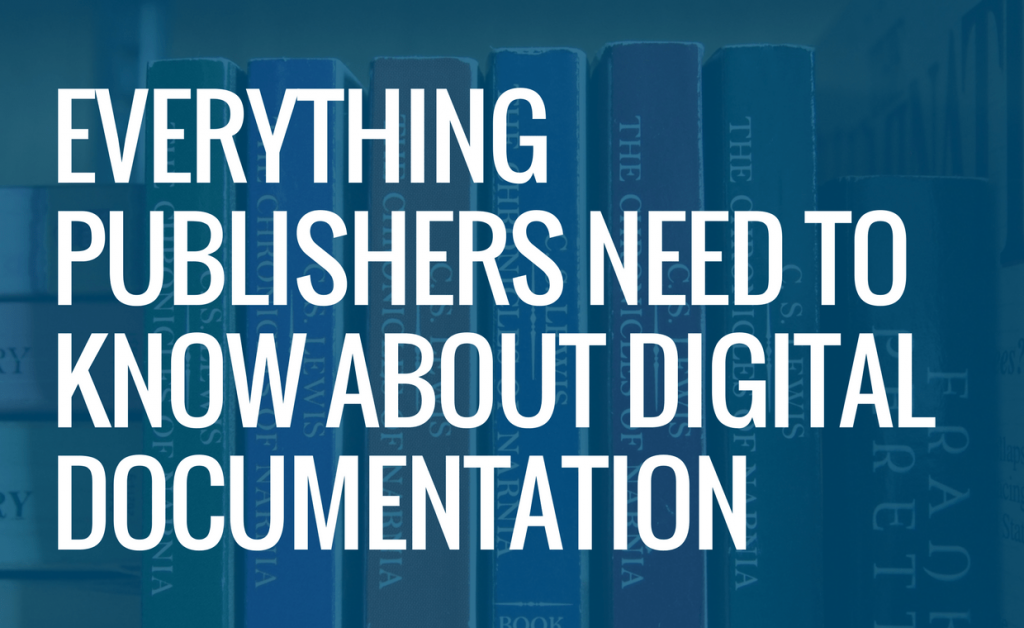Everything Publishers Need to Know about Digital Documentation

The publishing industry is unique when it comes to digital documentation. With a unique set of needs, challenges, and benefits, publishing houses often need to know more about digital documentation than other industries. If you’re missing a crucial piece of info such as the difference between PDF, MOBI, and EPUB, or how you can overcome digital documentation’s challenges, read on:
Contents
Digital Documentation’s Big Challenge
While most industries are concerned with digitizing paper documents, the publishing industry has the opposite problems. They need to ensure digital documents produce true-color, high resolution, infinitely repeatable prints. The ubiquity of PDFs, their accessibility, and their suitability for printing and pre-printing workflows have made them the go-to format for the industry. However, their quality and consistency during exchanges is critical to efficient operation.
Large publications can involve enormous file sizes, which need to be rendered quickly and in high-resolution for reviewing and late-stage editing. Any PDF applications used require powerful processing capabilities to maintain efficiency.
Luckily, the PDF/X standard, almost universally adopted across the publishing industry, minimizes file errors that hinder the printing process (i.e. missing images, incorrect color spaces and unembedded fonts). Following this standard, numerous submissions of the same document are guaranteed to print uniformly and at high qualities. A single PDF/X standard is not enough to completely address diverse sections of the industry, and a family of sub-standards from PDF/X-1 to X-5 exists to tailor printing for specialized results.
The Need for Digital Documentation
The publishing industry faces upheaval with an unprecedented move to digital content. British and U.S. publishers estimate 20% of their content offerings will be digital, with other European publishers estimating 10%.
As eBooks and electronic readers become more commonly used, the need for digital documentation that’s efficient and high quality is only going to increase.
PDF vs MOBI and EPUB
Digital publishing faces different challenges to traditional press publishing with the need for a single document to display correctly on e-readers, tablets, or mobiles. This has led to the creation of newer, specific formats such as EPUB and MOBI which are specifically created for eBook readers. Each format has a few differences, including the size of images it may be able to use, encryption support, and more.
The important thing to realize however, is that it really doesn’t matter which format you choose. There are plenty of tools that exist to convert the previously mentioned formats to and from PDF files. By using marked content to add structure to PDFs allows for cross-device compatibility and easy conversion between formats. Adding marked content also improves digital publishing accessibility, making it more compatible with eBook readers and similar technology.
Benefits of Digital Documentation for Publishers
Protecting content from theft remains an issue for both print and digital publications. Fortunately, PDF applications used by publishers contain features to protect documents from theft, ranging from the ability to add watermarks to files for print or e-publications to full-fledged integration with Digital Rights Management (DRM).
In addition to increased security, PDF applications developed for the publishing industry are built to interact with many programs and tools. This results in the ability to seamlessly integrate with a publisher’s workflow, no matter how complex. Ultimately, it results in maximum efficiency and productivity when designing and producing documents.
How Foxit Can Help
Foxit PDF SDK arms developers with the tools to develop PDF applications that fulfill all the needs of the modern publishing house. Google chose our software to be the underpinning technology for their open-source PDF engine for its versatility and power. Additionally, it is the chosen PDF SDK for major publishing houses such as Harper Collins and the New York Times. Foxit PDF SDK provides:
- Built-in tools for PDF/X Compliance. Foxit PDF SDK comes with several built-in PDF libraries providing developers with all the tools needed to easily deliver documents complying to any of the PDF/X standards.
- Power and convenience. Large, high resolution documents can be rendered for viewing in their entirety in record time, or single pages can be selectively accessed for the fastest rendering whether via web, tablet, or mobile.
- Theft/piracy protection. Watermarks and annotations can be added individually or in bulk to PDFs.
- And more.
TRY FOXIT PDF SDK NOW FOR FREE!